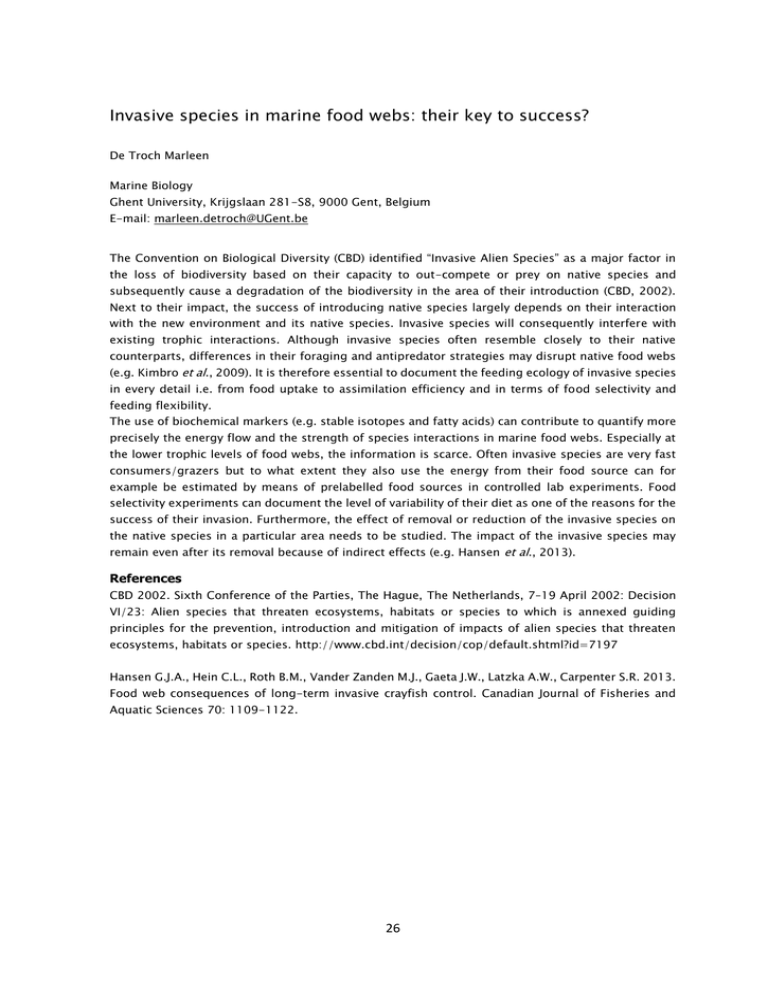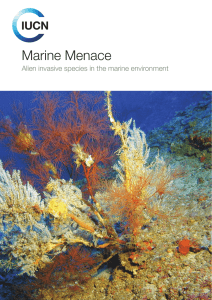Invasive species in marine food webs: their key to success?
advertisement

Invasive species in marine food webs: their key to success? De Troch Marleen Marine Biology Ghent University, Krijgslaan 281-S8, 9000 Gent, Belgium E-mail: marleen.detroch@UGent.be The Convention on Biological Diversity (CBD) identified “Invasive Alien Species” as a major factor in the loss of biodiversity based on their capacity to out-compete or prey on native species and subsequently cause a degradation of the biodiversity in the area of their introduction (CBD, 2002). Next to their impact, the success of introducing native species largely depends on their interaction with the new environment and its native species. Invasive species will consequently interfere with existing trophic interactions. Although invasive species often resemble closely to their native counterparts, differences in their foraging and antipredator strategies may disrupt native food webs (e.g. Kimbro et al., 2009). It is therefore essential to document the feeding ecology of invasive species in every detail i.e. from food uptake to assimilation efficiency and in terms of food selectivity and feeding flexibility. The use of biochemical markers (e.g. stable isotopes and fatty acids) can contribute to quantify more precisely the energy flow and the strength of species interactions in marine food webs. Especially at the lower trophic levels of food webs, the information is scarce. Often invasive species are very fast consumers/grazers but to what extent they also use the energy from their food source can for example be estimated by means of prelabelled food sources in controlled lab experiments. Food selectivity experiments can document the level of variability of their diet as one of the reasons for the success of their invasion. Furthermore, the effect of removal or reduction of the invasive species on the native species in a particular area needs to be studied. The impact of the invasive species may remain even after its removal because of indirect effects (e.g. Hansen et al., 2013). References CBD 2002. Sixth Conference of the Parties, The Hague, The Netherlands, 7–19 April 2002: Decision VI/23: Alien species that threaten ecosystems, habitats or species to which is annexed guiding principles for the prevention, introduction and mitigation of impacts of alien species that threaten ecosystems, habitats or species. http://www.cbd.int/decision/cop/default.shtml?id=7197 Hansen G.J.A., Hein C.L., Roth B.M., Vander Zanden M.J., Gaeta J.W., Latzka A.W., Carpenter S.R. 2013. Food web consequences of long-term invasive crayfish control. Canadian Journal of Fisheries and Aquatic Sciences 70: 1109-1122. 26






